Congratulations, you’re in Peru with a tourist visa. Now what? You don’t want to be one of those people that overstays their tourist visa by 5 years and then scratches their chin about how to pay $1500 worth of fines in order to leave. You’d spend just as much border hopping every 3-6 months too. No, you need a resident visa.
If you really see yourself going long-term in Peru, a year at least, you’ll want to get your residency. The famous carné (also spelled carnet) de extranjería. If you want access to basic things such as banking and human rights, you need one of these. Besides that, working without a CE is miserable. You earn less, even though you don’t pay taxes. Employers can (and will) cheat you, and can drop you in a heartbeat for trivial reasons.
Your Resident Visa is good for one year before requiring renewal.
The two most common ways to secure a resident visa are marriage and work. The first is considerably easier in the short term, but more complicated down the line. I personally recommend the latter.
If bureaucracy were an Olympic sport Peru would easily have a gold medal. So this may be a long post. To help organize it somewhat I’ve created a chart here with the key steps in each part of the process. Down below you’ll find detailed information for each step.
The Steps to Getting a Resident Visa
| Marriage | Worker | |
| Step 1 | Get married | Get a job offer |
| Step 2 | Get marriage certificate at RENIEC | Get Special Permission to Sign Contracts |
| Step 3 | Pay Banco de La Nación | Pay Banco de la Nación |
| Step 4 | Make an online appointment with Immigrations | Present contract to the Ministry of Labor |
| Step 5 | Present your paperwork | Make an online appointment with immigrations |
| Step 6 | Go to INTERPOL | Present your paperwork |
| Step 7 | Return to immigrations, receive carnet | Go to INTERPOL |
| Step 8 | Return to immigrations, receive carnet |
Getting married and/or getting a job
These two topics may seem pretty self-explanatory, but they merit their own articles entirely. Coming soon.
Marriage certificate
The jurisdiction you get married in will be able to give you a copy of your marriage certificate. The process varies slightly from one municipality to the next, but in general it’s as simple as paying a few soles and having a couple witnesses present. It might be good to get a second one of these.
You’ll take this to a RENIEC office and they’ll put it in the system, and then it’s valid for immigrations.
If you got married outside Peru, you’ll need to have the originals apostilled and officially translated in Peru.
Special Permission to Sign Contracts (Permiso especial para firmar contratos)
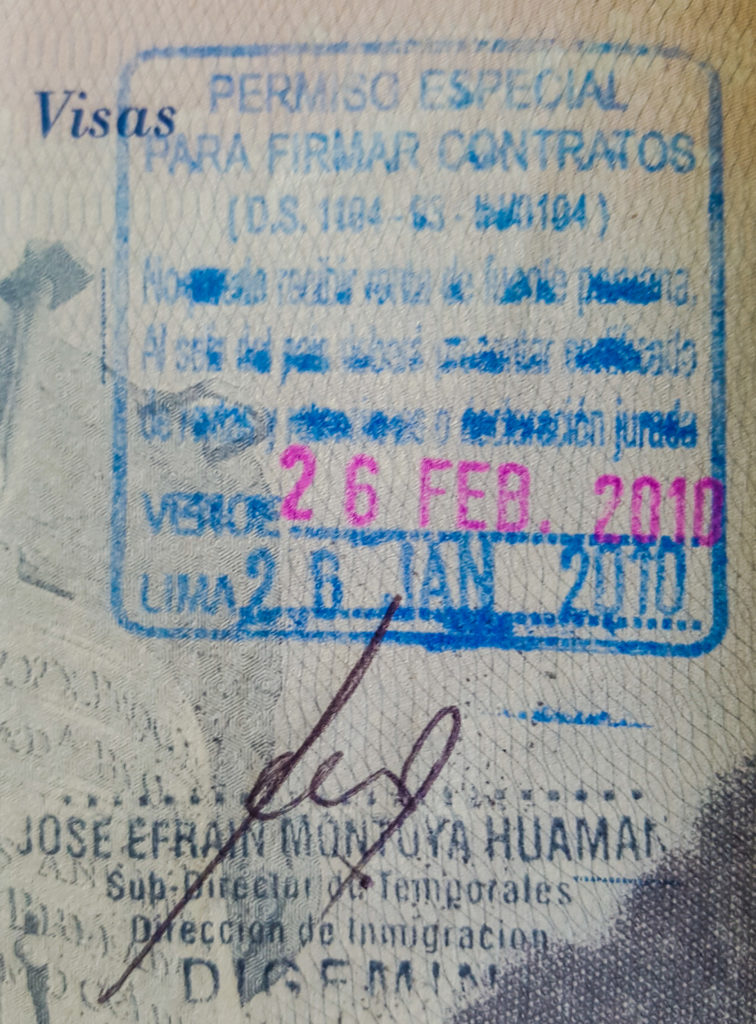
In the past this was basically a way to jerk people out of $50. Now there’s only a 16 soles fee. Any work contract signed before this date is invalid. It’s just a stamp in your passport.
Present contract to Ministry of Labor
Your employer should ABSOLUTELY do this for you and if they refuse tell them to get bent. The costs for this are supposed to fall on the employer, who has to justify why they need a foreigner.
Paying Banco de la Nación

Get used to seeing this place. Due to rampant corruption in Peru, no government office handles money directly. Everything goes through the state-run bank. Any time you need a trámite done you pay what’s called the “derecho de trámite,” whose price varies. Figure out what ones you need and pay them all at once if you can. You’ll be asked to show your ID and they’ll put the ID number on the receipt. CHECK THIS RECEIPT! Make sure the correct trámite title is on the paper, and that your name and ID appear correctly. If even one letter is off you risk rejection, and the refund process is so painful as to not be worth it.
Lines are long but they move fairly fast. To their credit the bank has lots of workers and in most locations at least a dozen stations.
You’ll need to make the following payments (note, all prices in dollars are still paid in soles at going exchange rates):
- Derecho de trámite – Permiso Especial para Firmar Contratos (16 soles, workers only)
- Derecho de trámite – Solicitud de Visas de Residentes (107 soles)
- Derecho de trámite – Inscripción en el Registro Central de Extranjería y Emisión del carné de extranjería (50 soles)
- Derecho de trámite – Ficha de canje internacional (80 soles)
- Cambio de calidad migratoria ($200)
- Inscripción en el Registro Central de Extranjería ($15)
- Tasa anual de extranjería ($20)
Making an Online Appointment with Immigrations for your Resident Visa
Brief veteran expat complaint: You have no idea how good you have it now. In the past you went to the immigrations building whenever you wanted, right when the doors opened, snagged the first place in line, and presented your paperwork after waiting for hours. Inevitably you forgot a copy of something and would have to go downstairs, across the street, pay ten cents, go to the back of the line, and wait another hour and a half. And then they’d take lunch and you’d stand around for 45 minutes. All in the hot summer sun in a cramped room full of foreigners.
Now you just go to the website and pick what you need done (for first timers it’s “Cambio de Calidad Migratoria”) and set a date and time.
You’ll still end up waiting some, but this effectively controls how many people can be in the building at once, ensuring that lines don’t exceed capacity.
Arrive 15-20 minutes early for this appointment, just to be safe.
Presenting your paperwork
Here are the requirements for different visa types. You should make sure you have all the documents relevant for the resident visa you need.
Print out Form-007 and mark it up correctly. This is when you present everything required for the Solicitud de Visas de Residentes process. The Inscripción process comes after this.
Bring two photocopies of everything (passport, forms, marriage certificate, work contract, even banco de la nacion receipts), just because. On the first floor of immigrations there’s a Fedetario. He stamps your copies compared to the originals. Have this guy stamp everything. Stamps are extremely important in Peru. Do this before you get upstairs.
If all goes well you’ll get a date to come back and pick up your carnet. It took me 3 years to get it right the first time, so don’t feel bad if you screw up.
Go to INTERPOL
INTERPOL’s office is near the US embassy. Like every other step, you have to pay Banco de la Nacion, and some nationalities have to pony up an extra fee via money order (Cheque certificado). (More information on these here)
Lay back in the dental chair while they count your teeth for a few minutes.
If you’re married, bring your marriage certificate.
You’ll get a page that (hopefully) says you’re a law-abiding citizen. You’re this close to getting your resident visa.
Return to Immigrations
If you’ve made it this far, the only thing that can stop you is if the computer system crashes. This happens sometimes. March into immigrations with your fists on your hips and proudly slap your INTERPOL sheet onto the table, along with Form-007A and more copies of everything.
You’ll have your personal data verified at a computer from the early 90s and proceed to have your picture taken and from a massive slab of plastic will emerge your beautiful new carnet. Hot to the touch, fresh out the oven, raise your card proudly over your head and skip out of the building.
The whole process has ideally taken 4-6 months and exerted grievous boredom upon your person, but you’ve made it! Congratulations, you’ve got a resident visa. Now you can open bank accounts, pay taxes, receive your lawfully entitled gratificación and CTS payments, which add up to another 25% of income a year, and in general live like a normal human being.

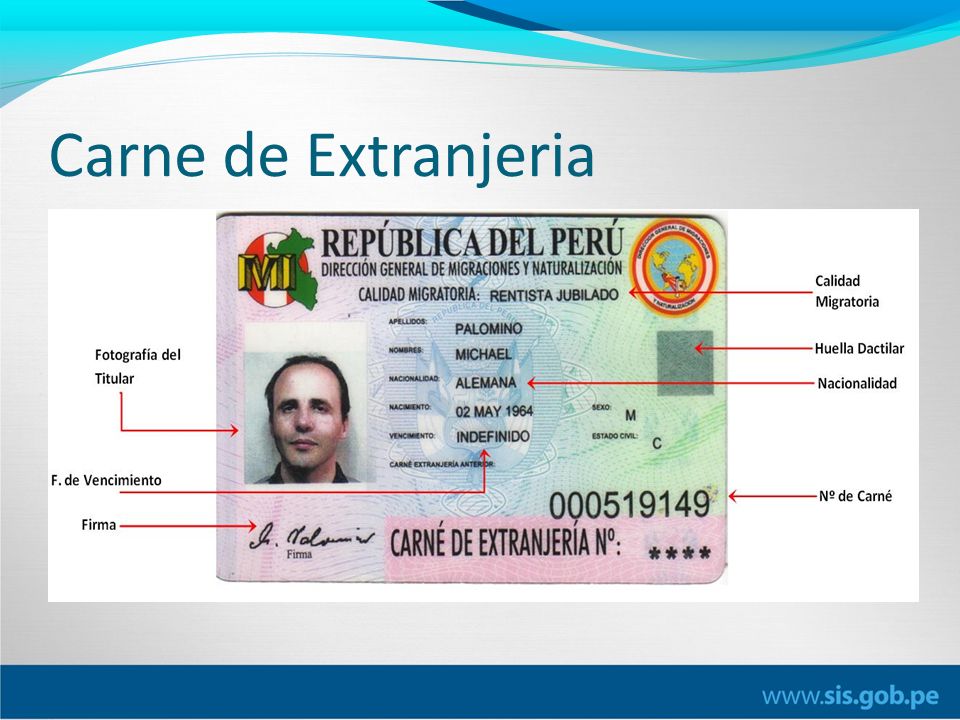
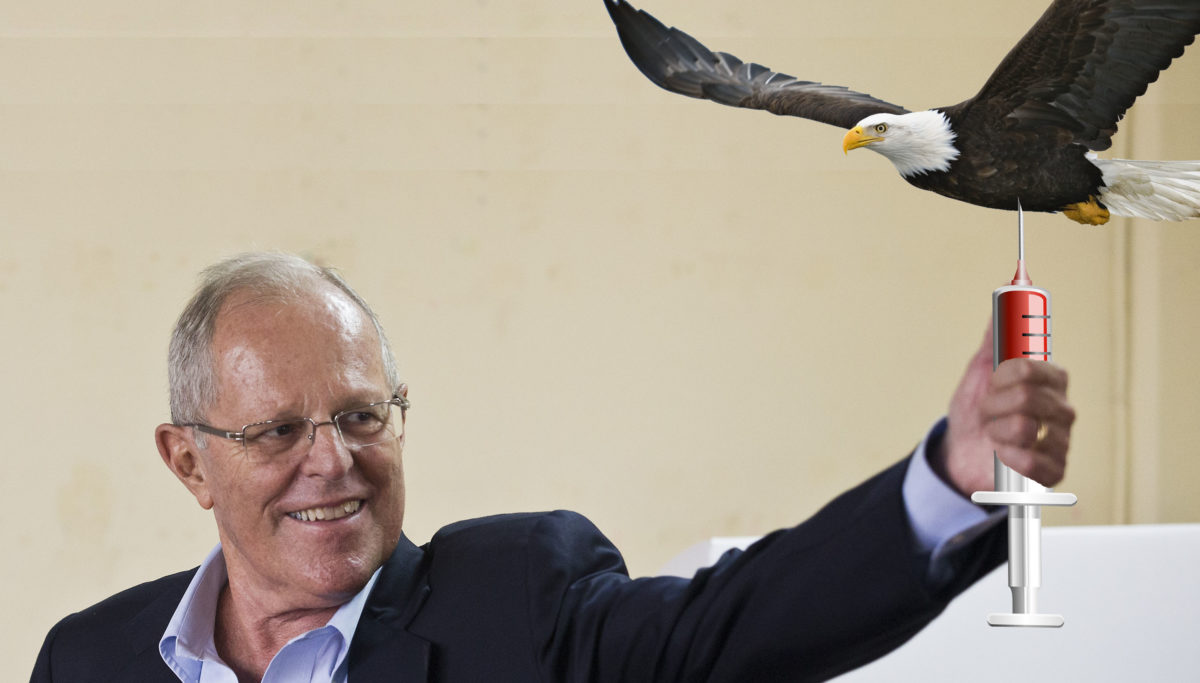

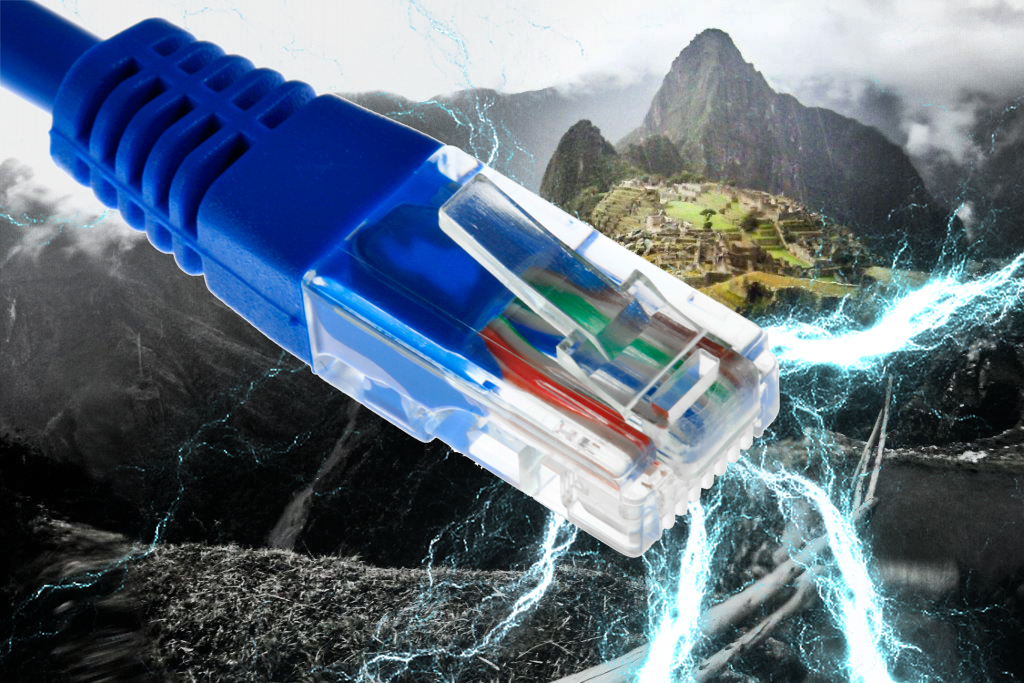

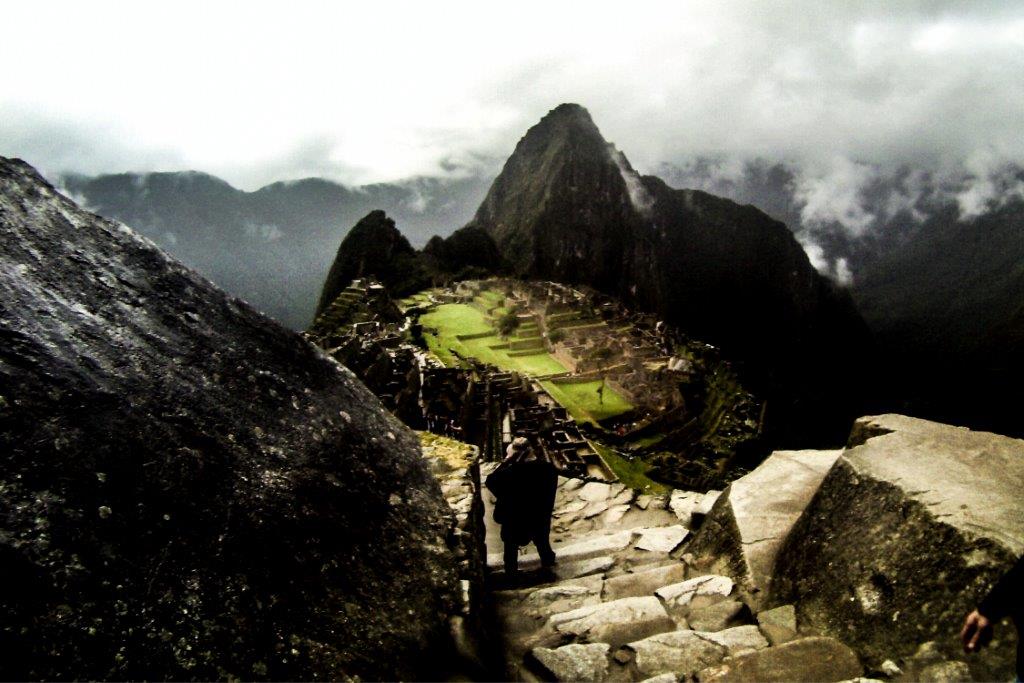
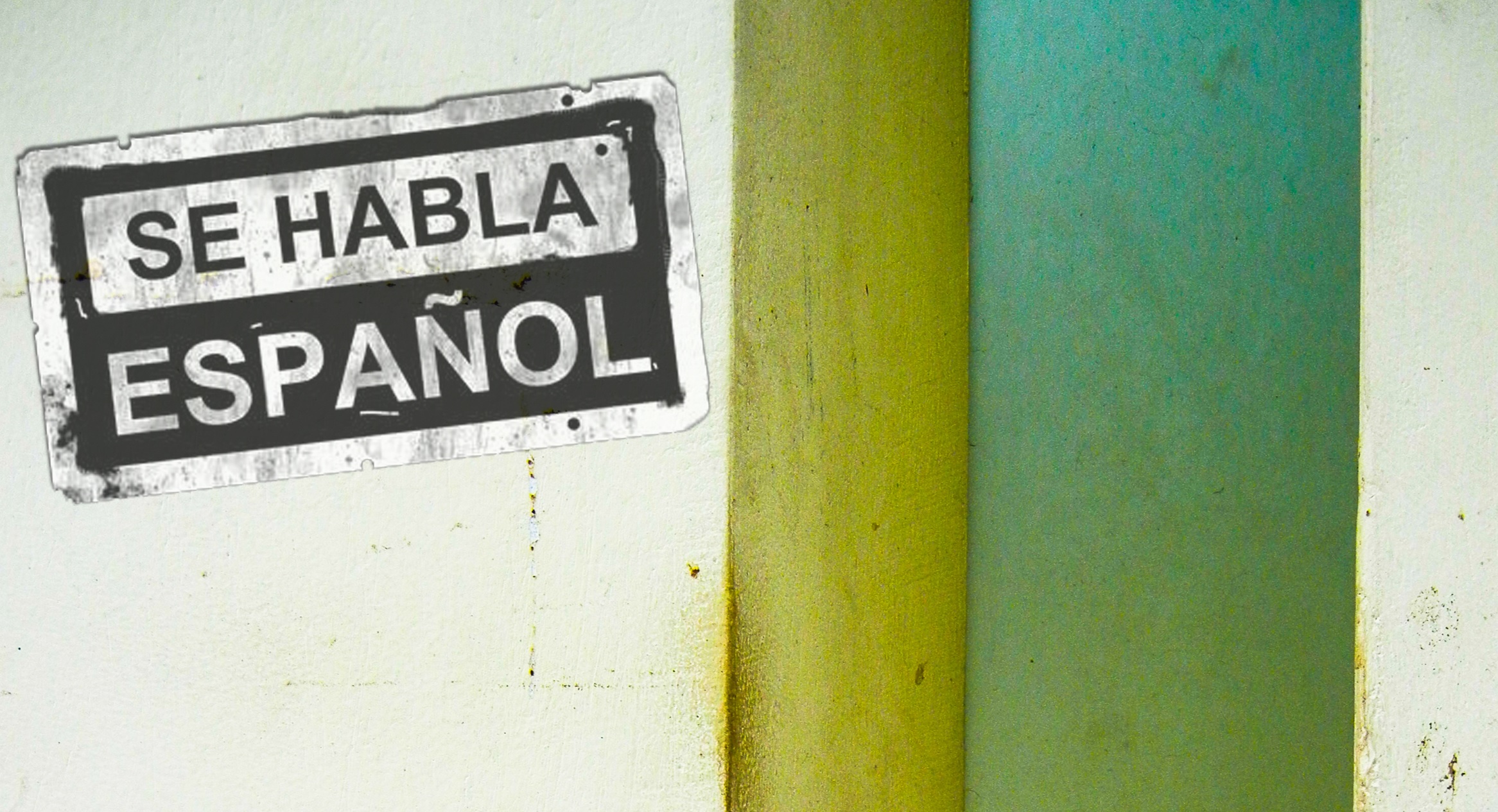


… [Trackback]
[…] Read More: streetsoflima.com/get-resident-visa-peru/ […]